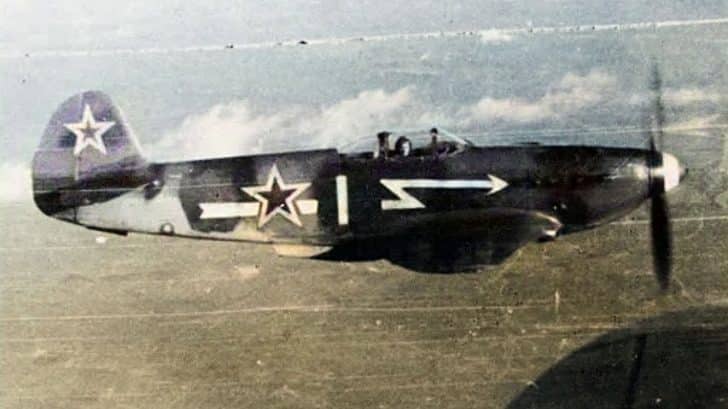The Yak 3 is the smallest fighter that was used during World War II, and it was also the same aircraft that gave the Luftwaffe a run for its money.
Entering the Easter Front in 1944, its German commanders were impressed by what this modest plane can do that they issued an urgent order in a frantic attempt to stop this new threat from the Soviet Union.
Lesson from Stalingrad
Although Moscow wasn’t captured, Operation Barbarossa is a disaster for the Red Army, as they were unable to hold the German Blitzkrieg when it violently tore through Soviet territories.
In the end, the Soviets can only slow down the invasion, and retreat further back. Being caught by surprise by the invasion and the destruction of their airbases, the Soviets had very little opportunity to study how their Air Force can go up against the Luftwaffe.
That opportunity would come during the Battle of Stalingrad. Despite their victory, the Soviets learned that the Luftwaffe has outclassed their own Air Force. They realized that if they want to gain the upper hand and push the Nazis out of Russia, they have a new workhorse fighter, one that could face off against the masterful engineering of the Germans.
Think Small
Alexander Yakovlev, the engineer responsible for the Yak-1, was determined to create a replacement for his own ubiquitous fighter.
In 1943, Yakovlev and a team of engineers designed a modern and powerful fighter aircraft that took advantage of the Yak-1’s attributes but took its survivability, flight characteristics, and firepower to an entirely new level.
Tiny, Nimble Fighter
Yakovlev’s philosophy was simple. Take the outline of a Yak-1, then put in a more powerful engine, and then make the airframe smaller and lighter so that you’ll get a faster and more maneuverable aircraft while being able to carry heavier armament at the same time.
Yak-3
The Yakovlev Yak-3 was fitted with a VK-105PF2, the latest iteration of the M-105 engine family. The warplane used a wing of a similar design to its predecessor but with a smaller surface area, and additional aerodynamic refinements.
All throughout its career, the aircraft would wield a wide array of weapon systems depending on the specific role that it would take part in an operation.
Exceeding Expectations
The final version of the aircraft was nothing like the Soviets had flown before.
After an intense but fruitful development phase, the newly designated Yak-3 entered service in 1944. It would soon exceed all expectations and would quickly become the Soviet Fighter Force’s backbone.
Loved By Soviet Pilots
The aircraft proved that it was a force to be reckoned with, and it was loved by Soviet pilots. It was robust, easy to maintain, and when used properly, it’s a highly reliable dogfighter.
Although its performance quickly degraded when flying above 13,00 feet, Soviet pilots quickly used it as a tactical fighter, flying low over battlefields, and then intercepting the enemy close to the ground, when the plane showed a fantastic performance.
When it finally made it to the battlefront in 1944, it didn’t take long to start shifting the balance in the favor of the Soviet Union, much to Germany’s dismay.



